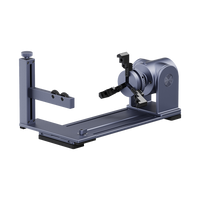Starting a woodworking business can be a rewarding venture if you have a passion for working with wood and creating handmade products. Here are steps to help you start your woodworking business:

12 Steps to Start A Woodworking Business
1. Develop Your Woodworking Skills:
Ensure you have a solid foundation in woodworking. Take classes, attend workshops, or work as an apprentice to improve your skills.
Experiment with different techniques and styles to find your niche within the woodworking industry.
2. Create a Business Plan:
Outline your business goals, target market, competition analysis, pricing strategy, and financial projections.
Determine the legal structure of your business (sole proprietorship, LLC, etc.) and register it with the appropriate authorities.
3. Define Your Niche:
Identify the specific type of woodworking you want to focus on, such as furniture making, custom cabinetry, woodcrafts, or specialized products.
Consider your target market and tailor your offerings to meet their needs and preferences.
4. Set Up Your Workspace:
Establish a dedicated and well-equipped workspace. This may be a garage, workshop, or studio.
Invest in quality tools and equipment specific to your chosen niche.
5. Legal Requirements:
Obtain any necessary licenses and permits required to operate a woodworking business in your area.
Comply with safety regulations and ensure your workspace meets all necessary standards.
6. Source Materials:
Establish relationships with reliable suppliers for wood, hardware, and other materials.
Consider sustainable sourcing options if environmental responsibility is important to you and your customers.
7. Build a Portfolio:
Create a portfolio showcasing your best work. This will be crucial for attracting customers and clients.
Consider building a website to display your portfolio and provide information about your business.
8. Set Prices and Policies:
Determine your pricing strategy based on the cost of materials, labor, and desired profit margins.
Establish policies for payment, delivery, and returns.
9. Market Your Business:
Develop a marketing plan to reach your target audience. This may include online marketing, social media, attending local craft fairs, and word-of-mouth referrals.
Utilize platforms like Etsy, Instagram, or a personal website to showcase and sell your products.
10. Network and Collaborate:
Join woodworking forums, attend industry events, and network with other woodworkers.
Collaborate with local businesses or interior designers to expand your reach.
11. Provide Excellent Customer Service:
Build a reputation for excellent craftsmanship and customer service. Happy customers are more likely to become repeat customers and refer others.
12. Adapt and Evolve:
Stay updated on industry trends and continuously improve your skills.
Be willing to adapt your product offerings based on customer feedback and market demand.
10 Most Profitable Woodworking Projects
1. Custom Furniture:
Crafting custom furniture pieces, such as tables, chairs, or bed frames, can be lucrative. Focus on high-quality materials and unique designs to attract customers willing to pay a premium.
2. Kitchen Cabinets:
Building custom kitchen cabinets can be profitable, especially if you offer personalized designs and high-quality craftsmanship. Kitchen remodeling projects often seek unique and well-crafted cabinets.
3. Wooden Toys:
Handcrafted wooden toys can be popular, especially for eco-conscious parents who appreciate the durability and natural materials. Consider creating educational and heirloom-quality toys.
4. Outdoor Furniture:
Building outdoor furniture, like patio sets or garden benches, can cater to a specific market. Using weather-resistant materials can enhance the longevity of these pieces.
5. Wooden Home Decor Items:
Crafting small decorative items such as wooden signs, picture frames, or wall art can be both creatively satisfying and profitable. These items are often impulse purchases and can be sold at craft fairs or online.
6. Wooden Utensils and Kitchenware:
Handcrafted wooden kitchen utensils, cutting boards, and serving trays can appeal to those who appreciate artisanal and sustainable products for their homes.
7. Custom Woodworking Projects for Events:
Creating custom items for special occasions, such as weddings or anniversaries (e.g., custom wooden signs, cake toppers, or guest books), can be a niche market with higher price points.
8. Wooden Jewelry:
Crafting unique wooden jewelry pieces, like rings, bracelets, or earrings, can attract a niche market looking for distinctive accessories made from natural materials.
9. Woodworking Classes and Workshops:
Hosting woodworking classes or workshops can generate income while sharing your skills. This can include beginner classes, specialty workshops, or even online tutorials.
10. Wooden Smartphone Accessories:
Crafting wooden phone cases, charging docks, or speaker amplifiers can be popular among consumers looking for stylish and eco-friendly tech accessories.
FAQs You Should Know to Start Your Woodworking Business
1. Do I need formal education in woodworking to start a business?
While formal education can be beneficial, it's not a strict requirement. Many successful woodworkers are self-taught or learn through workshops and practical experience.
2. How much does it cost to start a woodworking business?
The startup costs can vary widely depending on the scale of your operation and the type of woodworking you do. Costs may include tools, equipment, materials, workspace setup, and initial marketing. A detailed business plan can help estimate these costs.
3. What legal requirements do I need to consider?
Check local regulations for business licensing and permits. Depending on your location, you may need health and safety certifications. It's also essential to have a clear understanding of tax obligations.
4. How do I price my woodworking products?
Determine the cost of materials, labor, and overhead, then add a desired profit margin. Research the market to understand what similar products are priced at. Consider the perceived value of your craftsmanship and uniqueness of your designs.
5. Where can I source materials for my woodworking projects?
Look for local lumberyards, woodworking supply stores, or online suppliers. Consider sustainable and responsibly sourced materials if this aligns with your business values.
6. How do I market my woodworking business?
Utilize online platforms such as social media and websites to showcase your work. Attend local craft fairs, collaborate with other businesses, and ask satisfied customers for referrals. Word of mouth can be powerful in the woodworking community.
7. How can I protect my designs and products from being copied?
Consider trademarking or copyrighting unique designs if applicable. Non-disclosure agreements (NDAs) can be used when collaborating with others. Building a strong brand and customer loyalty can also deter imitation.
8. Should I sell my products online or in physical stores?
Consider both options based on your target market. Online platforms like Etsy can provide a global reach, while selling in local stores or markets can help you connect with your community.
9. How can I ensure the safety of my woodworking business?
Follow safety guidelines and regulations in your area. Invest in safety equipment, provide proper training for yourself and any employees, and maintain a clean and organized workspace.
10. How do I handle custom orders and commissions?
Clearly communicate with customers about their specific needs and preferences. Have a transparent process for custom orders, including pricing, timelines, and any additional charges for customization.
11. How can I stay inspired and continue learning in woodworking?
Join woodworking forums, attend workshops, and connect with other woodworkers. Follow industry trends and continuously challenge yourself with new projects to enhance your skills and creativity.









































